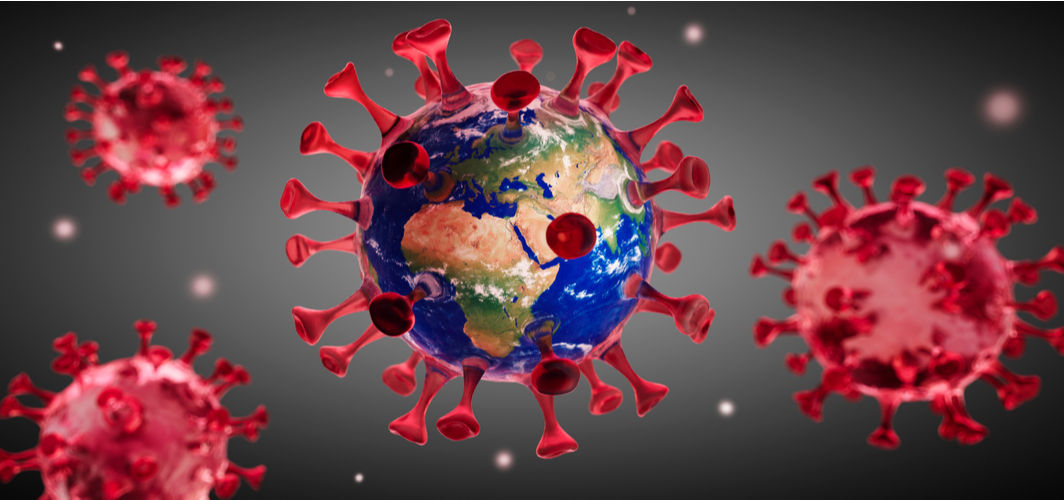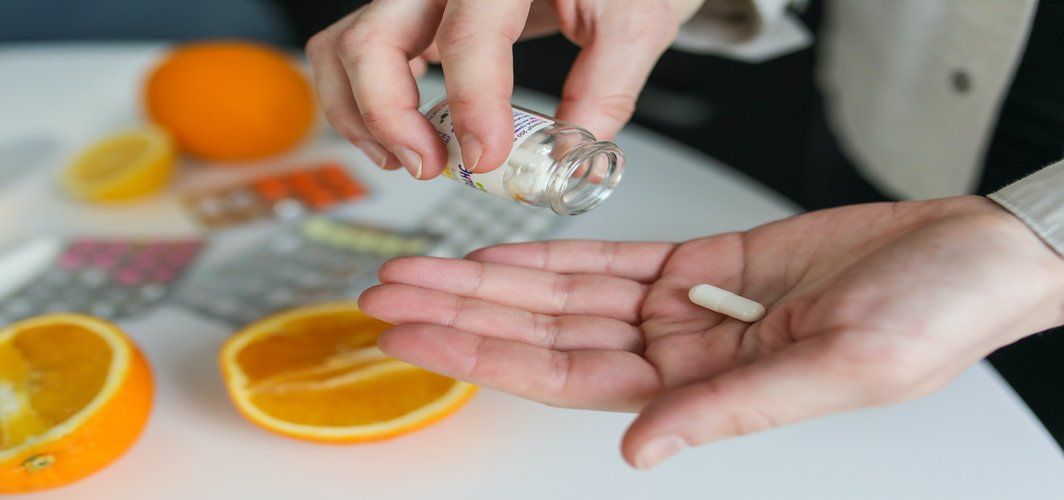Coronavirus Updates
COVID-19: Do We Know Enough or Is There More to Learn?
8 min read
By Apollo 24/7, Published on - 19 September 2020, Updated on - 18 October 2022
Share this article
2
8 likes

More than six months into the pandemic, the world has been forced to adapt to a new reality – of staying away from socialising, wearing masks when outdoor, maintaining physical distance, washing hands throughout the day and several other aspects that have become an inevitable part of our routines. The COVID-19 pandemic has triggered countrywide lockdowns, disrupted economies, altered medicine development cycles, and created an alarming amount of news and information. At the same time, a great deal has been learnt about COVID-19 and the SARS-CoV-2 virus that causes it - the symptoms it triggers, the treatment it necessitates and the outcome it delivers.
But the question is, do we know enough?
Let us clear the fog on what is known and what is yet to be known about COVID-19.
What is known so far
How the Coronavirus is transmitted
Several healthcare organizations including the Centres for Disease Control and Prevention (CDC) and World Health Organization (WHO) have maintained that the primary transmission route of the Coronavirus is person-to-person contact through the respiratory droplets from an infected person directly or through contaminated surfaces around them. So far, there is no evidence to suggest that the Coronavirus infection can be transmitted via food since this virus needs a human or animal host to multiply and sustain. The chances of Coronavirus spreading through everyday articles like shoes, bags, clothes, etc is minimal. To eliminate or reduce the risks of infection from such items, it is advisable to follow all the standard guidelines and precautions.
COVID-19 does not affect all population groups equally
Many studies have revealed that age, ethnicity, underlying conditions, comorbidities and specific geographical areas, may be associated with greater risk of infection, experiencing more severe symptoms and higher rates of death. According to the CDC, children infected with the Coronavirus are less likely to develop severe illness compared with adults and the rate of hospitalization among children is also low. COVID-19 risk and severity also depend on occupation, e.g., people working as security guards, taxi drivers, drivers, shopkeepers and construction workers are more likely to contract the virus.
A large percentage of infected people are asymptomatic
Evidence gathered during the early outbreak of COVID-19 indicated person-to-person spread irrespective of whether or not the carrier showed any symptoms. The individuals who do not show any symptoms despite being infected are called asymptomatic. The CDC had earlier said that up to 50% of all cases in the US are asymptomatic. In India, that number could be as high as 80%, according to recent reports.
There exists another group of individuals who are often confused with the asymptomatic ones. They are called pre-symptomatic which means they have not shown any symptoms yet, but will eventually. Then there are some who do show the usual COVID-19 symptoms such as cough, fever, breathing difficulties, etc. What we know is, whichever category an infected individual belongs to, they can be the carriers of the Coronavirus. Only the magnitude of the infection they cause is still unclear.
It’s not just the lungs that the Coronavirus attacks
The COVID-19 pandemic is known to affect the respiratory system, particularly the lungs. However, as the number of COVID-19 patients grew, doctors around the world noticed that the list of symptoms has expanded.
The cells of the human body have ACE2 receptors on their surfaces which are used by the SARS-CoV-2 for entry. Once inside the cell, it replicates and overpowers it resulting in the death of the cell. Consequently, it causes different symptoms in various parts of the body.
- Heart: The Coronavirus uses the ACE2 receptors in the inner capillary linings to infect the vascular endothelial cells, causing extreme inflammatory response and clots. This, in turn, may lead to instances of arrhythmia, cardiac arrest, heart failure, pulmonary embolism, myocarditis, strokes, etc. Research conducted worldwide points out some form of cardiac injury in 7% to 31% of COVID-19 patients.
- Kidney: Early studies have indicated that 30 percent of Coronavirus hospitalized patients develop moderate to severe kidney damage. Some of them already had pre-existing comorbid condition such as diabetes or hypertension, which made them susceptible to kidney problems. However, as per nephrologists, patients with severe COVID-19 symptoms may suffer from acute kidney damage despite having no pre-existing condition.
- Brain: Various studies have shown that COVID-19 affects the brain cells and can cause severe neurological problems, ranging from memory issues and confusion to hallucinations and seizures. COVID-19 patients experience headaches, confusion, strokes, seizures, and fatigue, and these symptoms are known to last even after the patients have recovered. Scientists have cited possible oxygen starvation, or the aftermath of a cytokine storm when the body’s immune system fights with the virus, as the reason for such neurological complications.
- Pancreas: There is evidence of COVID-19 patients experiencing pancreatic injuries due to the binding of the SARS-CoV-2 to the ACE2 receptors in the pancreas. Studies done by the National Center for Biotechnology Information, US (NCBI) indicated pancreatic injuries in 17% of severely ill COVID-19 patients. Pancreatic injuries can lead to the accelerated occurrence of acute respiratory distress syndrome which can advance to chronic pancreatitis.
A vaccine is on the horizon
Vaccines are being looked at as a silver bullet in the world’s return to normalcy. A remarkable amount of progress has been made in a significantly less amount of time. The typical research and development cycle of a vaccine which can take up to a decade has been shrunk to a few months in a record-breaking run to bring a life-saving product to the market. More than 200 vaccines are being developed worldwide out of which six have already entered the Phase 3 clinical trials. The results of these trials will confirm if the vaccines can offer protection against the Coronavirus.
What’s yet to be known
How many people have been actually infected?
According to government-reported statistics, over 3 crore people have been infected so far worldwide and close to 10 lakh have died after contracting the virus. In India, more than 50 lakh people have been infected and more than eighty-four thousand have died. The actual infections are likely to be a lot higher. According to the CDC, the actual number of people likely to have been infected in the US could be 10 times more than the confirmed numbers. In India, various serological surveys also indicate a similar trend. A recent serological survey in New Delhi indicates that one in three people have already been infected with the Coronavirus and have developed antibodies. In some of Mumbai’s slums, it was found that more than 55% of the population had developed antibodies after infection.
These discrepancies between reported and actual cases could occur based on several reasons. First, these numbers are based on tests conducted on symptomatic people and could have missed several asymptomatic cases. Second, the availability and issues with testing – complexity of sample collection, equipment and materials used for testing, the expertise required, etc – may influence the true numbers. Hence, ‘serosurveys’ – a blood serum test that measures the presence of COVID-19 antibodies, could better determine the true extent of COVID-19 in a community.
Why do some people experience severe illness while some don’t?
The Coronavirus has baffled infectious disease researchers in more ways than one. However, the major one is its broad range of outcomes – from asymptomatic to death, from mild to moderate to severe illness. Though the factors (like age and underlying conditions) for severe outcomes are clear, there is no clarity on why some healthy individuals in younger age groups get severely ill while some recover in a couple of days.
Scientists are now studying underlying factors like blood type, genetic differences, cross-reactive T cells generated by the immune system during previous pathogen encounters, etc. to ascertain the reasons behind the various outcomes.
Do environmental and biological factors alter the outcome?
There have been stark differences between the COVID-19 outcomes observed in different countries – while some developed nations have had a high mortality rate, many emerging countries have reported low mortality numbers. This has triggered debates on higher acquired and innate immune responses and genetic backgrounds. Other studies have also pointed to the possibility of the Coronavirus being less stable at higher humidity and warmer temperatures. It will require more studies to establish the clinical relevance of environmental and biological factors on Coronavirus stability.
How long are people protected against reinfection?
There have been a few reports of patients getting re-infected with COVID-19, as they have tested positive for the virus again. Some studies point out that the degree of antibodies produced varies from person to person which implied that people who produced lower antibodies are likely to get re-infected. Other research indicates that people who recovered from the COVID-19 infection could be protected against the virus for some time, although the duration and the intensity of this immunity remain unknown. The matter seems complicated and a lot more research and data are necessary to arrive at a firm conclusion.
The way ahead
Though a great amount of intense research has increased our understanding of the Coronavirus, there is still a lot to learn. As the global COVID-19 situation continues to evolve, more clinical evidence and pandemic data will be required for the world to return to some semblance of normal life. Until then, we must continue to practice hand hygiene, avoid socialising, wear masks, etc. to curb the spread. Experts say that the Coronavirus may be around for a while but let us ride high on the hope that an effective vaccine will be available soon for everyone.
Coronavirus Updates
Leave Comment
Recommended for you

Coronavirus Updates
Safety and Hygiene Tips to Follow When Using Public Transport After the COVID-19 Lockdown
Take all the necessary precautions given in this article, including wearing masks and practicing social distancing, to protect ourselves when using public transport after lockdown.

Coronavirus Updates
Is It a Good Idea to Take Health Supplements to Fight the Coronavirus?
While health supplements do have their benefits and can boost your immune system, it is important to talk to the doctor before consuming them.

Coronavirus Updates
Can Frozen or Refrigerated Food Carry the Coronavirus?
As of now, it requires more evidence and investigation to derive a concrete conclusion about whether consumption of refrigerated food items can cause Coronavirus infection.
Subscribe
Sign up for our free Health Library Daily Newsletter
Get doctor-approved health tips, news, and more.
Visual Stories

Covid-19 Updates: Are Things Getting Brighter?
Tap to continue exploring
Recommended for you

Coronavirus Updates
Safety and Hygiene Tips to Follow When Using Public Transport After the COVID-19 Lockdown
Take all the necessary precautions given in this article, including wearing masks and practicing social distancing, to protect ourselves when using public transport after lockdown.

Coronavirus Updates
Is It a Good Idea to Take Health Supplements to Fight the Coronavirus?
While health supplements do have their benefits and can boost your immune system, it is important to talk to the doctor before consuming them.

Coronavirus Updates
Can Frozen or Refrigerated Food Carry the Coronavirus?
As of now, it requires more evidence and investigation to derive a concrete conclusion about whether consumption of refrigerated food items can cause Coronavirus infection.